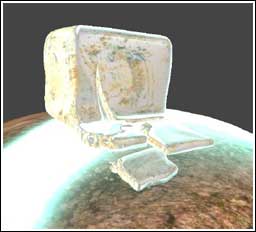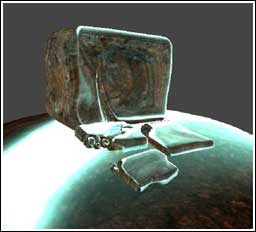|
Intellisample Technology Continuing with our recent series highlighting the technological advancements in graphics rendering ushered in by the forthcoming launch of the NVIDIA® GeForce™ FX GPUs, we take a look at NVIDIA's Intellisample� Technology, which is made up of a number of core technical breakthroughs: Color Compression, Dynamic Gamma Correction, Adaptive Texture Filtering, fast clearing of the color buffers, and new antialiasing modes. All of which allow the NVIDIA GeForce FX to improve performance while achieving new levels of realism. Color Compression The new NVIDIA architecture includes hardware-implemented color compression technology. NVIDIA GeForce FX processors employ an advanced proprietary form of loss-less data compression with a 4:1 compression ratio for color information. This industry-unique color compression solution is implemented in hardware and is completely transparent to applications, with both compression and decompression taking place in real time. Because this compression is completely loss-less, there is no reduction in image quality or loss of precision. The result of this NVIDIA technology is a dramatic increase in memory efficiency, overall improved system performance, and unmatched image quality. For the user, this means that antialiasing speed is improved to the point where essentially all modes of antialiasing are free-without any associated loss of performance. Dynamic Gamma Correction Contrary to what a computer monitor shows or how the human eye perceives it, computer graphics programs generally assume a linear color space. And, with most artwork created in some form of gamma space, operations done in the shaders should take place in gamma space as well, but this is not really convenient. Instead, the correct approach should bring color values back into linear space, perform the math, and corrects back into gamma space. Many previous shaders did not take gamma into consideration, resulting in color inaccuracies. However, with built-in gamma correction capabilities, NVIDIA GPUs free developers from the burden of changing gamma spaces. Users see a truer representation of each rendered image's luminance (or brightness).
Adaptive Texture Filtering NVIDIA's GeForce FX GPU provides more options to improve image quality without having to make sacrifices in frame rate. The GPU continuously monitors the geometry and texture content and makes intelligent trade-offs to enhance performance and prevent producing visual artifacts. If the user chooses to enable these techniques, the hardware will automatically adjust the number and type of samples it takes for texturing operations on a pixel-by-pixel basis. These algorithms are capable of intelligently selecting texture and filter levels for tri-linear as well as anisotropic filtering modes. Alternately, the user can choose to use the most conservative settings and know all of the texture filtering are done using traditional algorithms. Fast Clearing of the Color Buffer A hardware accelerated feature of the NVIDIA GeForce FX is the fast clear of the color buffers. Acceleration of this very common operation improves overall graphics performance. New Antialiasing Modes Two new Antialiasing modes that are supported by NVIDIA's GeForce FX GPU are 6XS and 8XS. GeForce FX has support for the new 6XS and 8XS FSAA technique and 8X for OpenGL. The highest levels available currently with the GeForce4 line is 4X and 4XS AA. By calculating 1.5 times many samples as 4X AA, 6X can improve image quality over the 4X or 4XS AA. The highest quality for AA is the 8X by calculating twice the availability of the 4X/4XS setting. Essentially PC users have the ability to fine tune their display settings and customize their look and feel providing fluid frame rates and great image quality. Conclusion The NVIDIA GeForce FX produces high framerates at the highest levels of image quality utilizing sophisticated compression, anisotropic, and trilinear filtering. As the challenges of achieving both richness of functionality and optimal performance increases, the latest advances from NVIDIA are serving to meet those challenges. Content developers are able to create new levels of geometric richness and visual complexity in their scenes through the improved efficiency of communications between the host and graphics subsystems. Through these features incorporated into the GeForce FX GPUs, artists, game developers, and users alike can experience new levels of realistic and life-like images, environments, and effects, ushering in a new era of real-time cinematic rendering on the desktop. |

